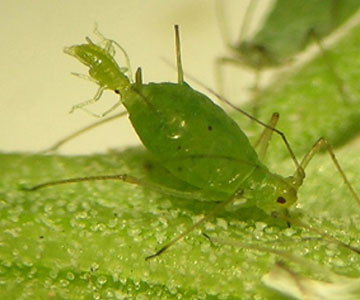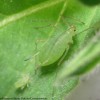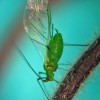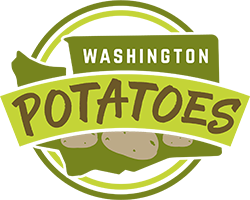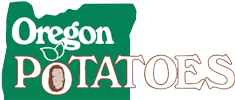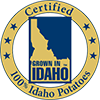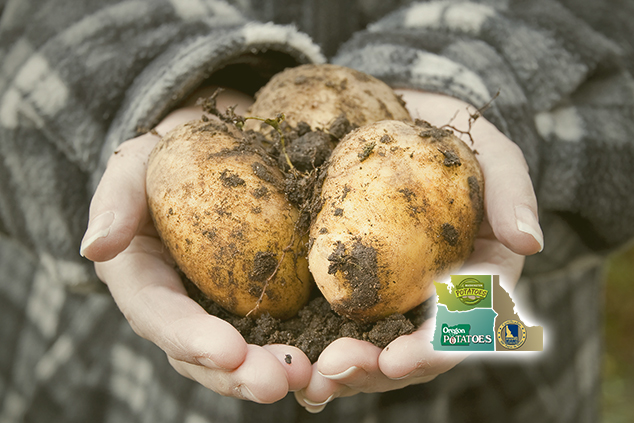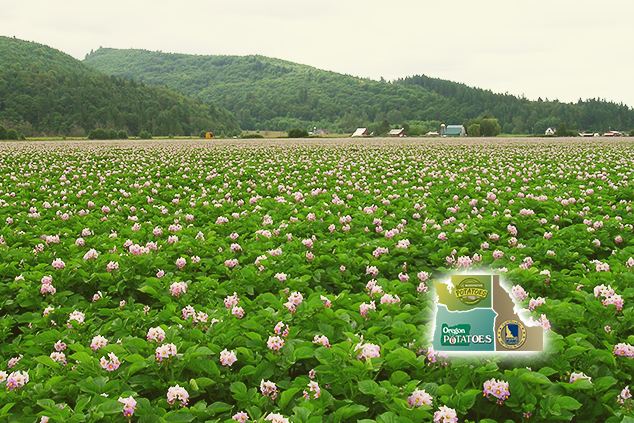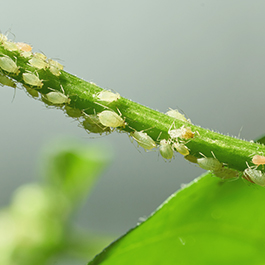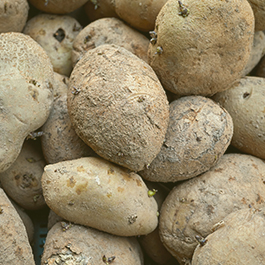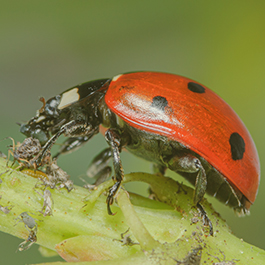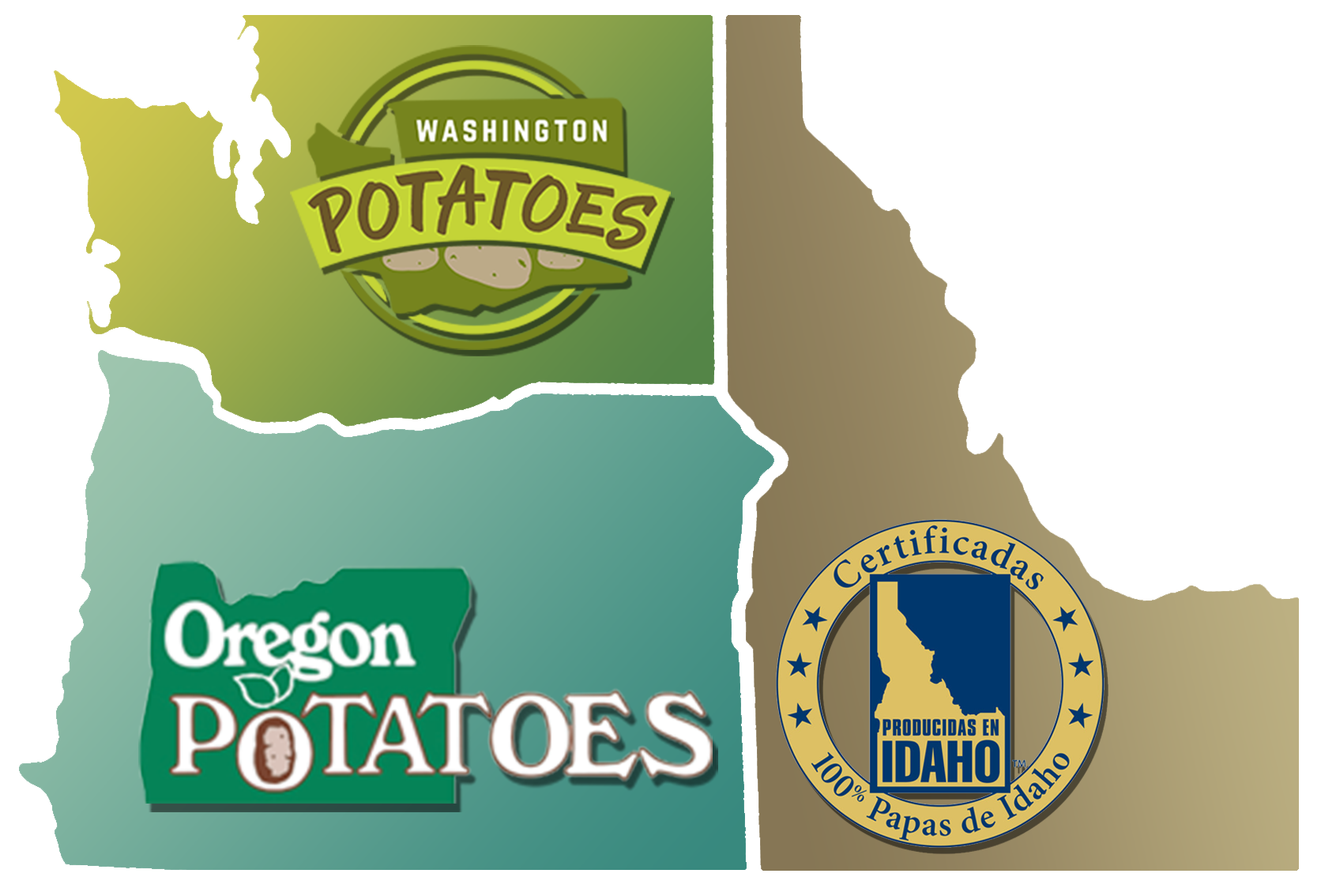Potato Aphid (Macrosiphum euphorbiae)
General Biology and Crop Damage:
Aphids may transmit virus disease and, when abundant, reduce yield. Throughout the growing season aphids produce live young, all of which are female and can be either winged or wingless. In the fall, winged males are produced which fly to overwintering hosts and mate with egg-laying females produced on that host. If wingless aphids are found on potato, they almost certainly will be one of the two pest species below, both of which can transmit important viruses. Potato aphid is generally more common in the spring and fall, while green peach aphid peaks during July and early August. Aphids threaten the crop mainly through their ability to vector the viruses PLRV and PVY, both of which reduce yield and can cause serious defects in harvested tubers.
Biology and Life History:
Potato aphid is another very successful species, originally from North America and having reached most of the world as a pest of crops, greenhouses, and indoor plants. Like green peach aphid, it can overwinter as either live adults and nymphs on weeds and other hosts in warmer microhabitats, or as eggs produced by special females in the fall. Eggs are usually laid on roses, but sometimes are laid on herbaceous plants. Potato aphid is native to the Northwest, and is one of the most common aphids found in native forests in Idaho, Oregon, and Washington.
Scouting and Thresholds:
Fields should be checked for aphids at least weekly starting shortly after emergence. When plants are upright, the most effective scouting method is beating sheets or beating trays. In some varieties, the vines become very long and lay down on the soil and become intertwined, making beating sheets difficult to use. In this case, a leaf sampling scheme might be useful. Entomologists generally report aphid numbers in terms of aphids per plant, so it is best to sample for aphids in a way that numbers can easily be converted to numbers per plant. There are no well-established treatment thresholds for aphids in potatoes in the Northwest. Varieties that are susceptible to net necrosis when infected by PLRV require a low treatment threshold, while other varieties can tolerate much higher numbers before treatment is warranted.
Management:
Potatoes can harbor large numbers of generalist predators that feed on aphids. These include the hemipteran bugs such as Orius pirate bugs, Geocoris big-eyed bugs, and Nabis damsel bugs. Other common aphid predators include lady beetles and their larvae, lacewings, and flower fly larvae. Aphid-specific parasitoid wasps can also be common in potato fields that are not heavily treated with insecticides.
The most important source of virus in a potato field is infected plants already in that field. Therefore, purchasing certified seed, with low or no virus infection, is the best first step in controlling aphid-related damage to potatoes. Controlling other sources of virus inoculum, such as cull piles and volunteer potatoes, is also important.
When used to control other pests, pyrethroid insecticides make aphid management more difficult. Predators eliminated by such applications play an important role in control of the pest and prevention of virus transmission. When possible it is best to use aphid insecticides with narrow spectra of control. For more information see this page.

